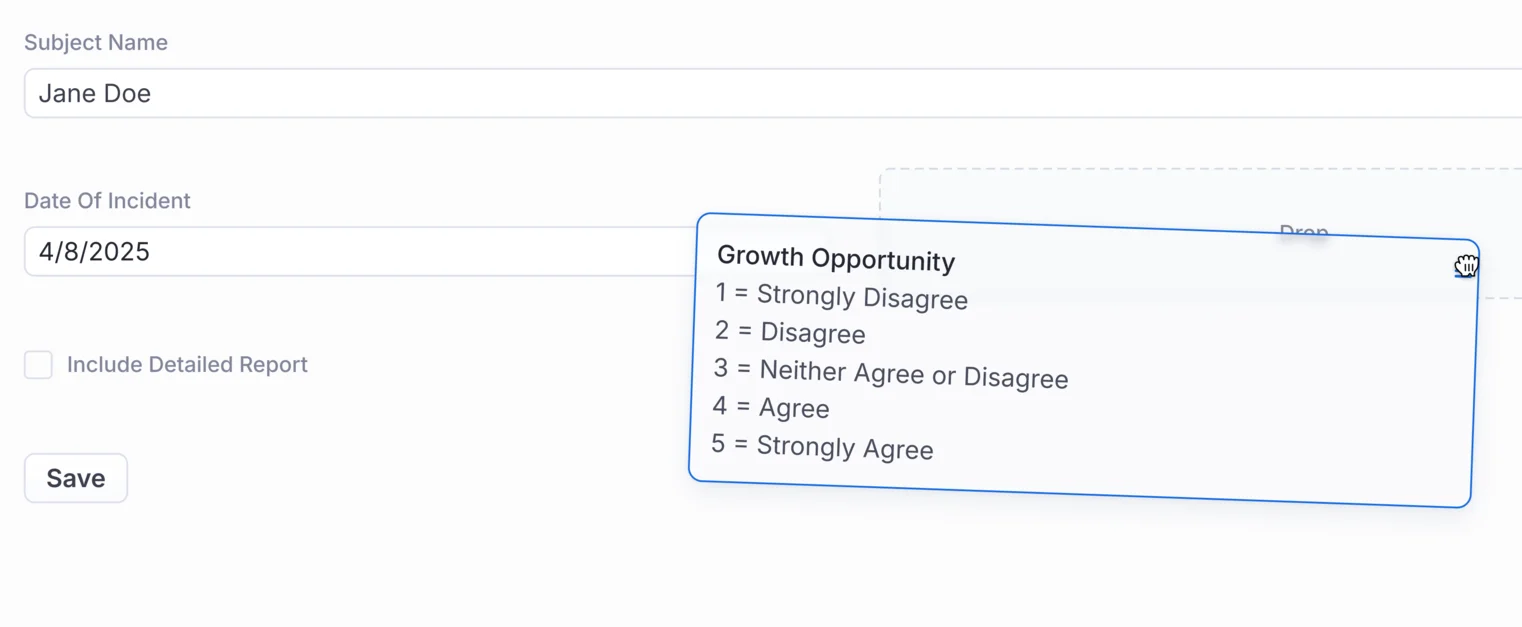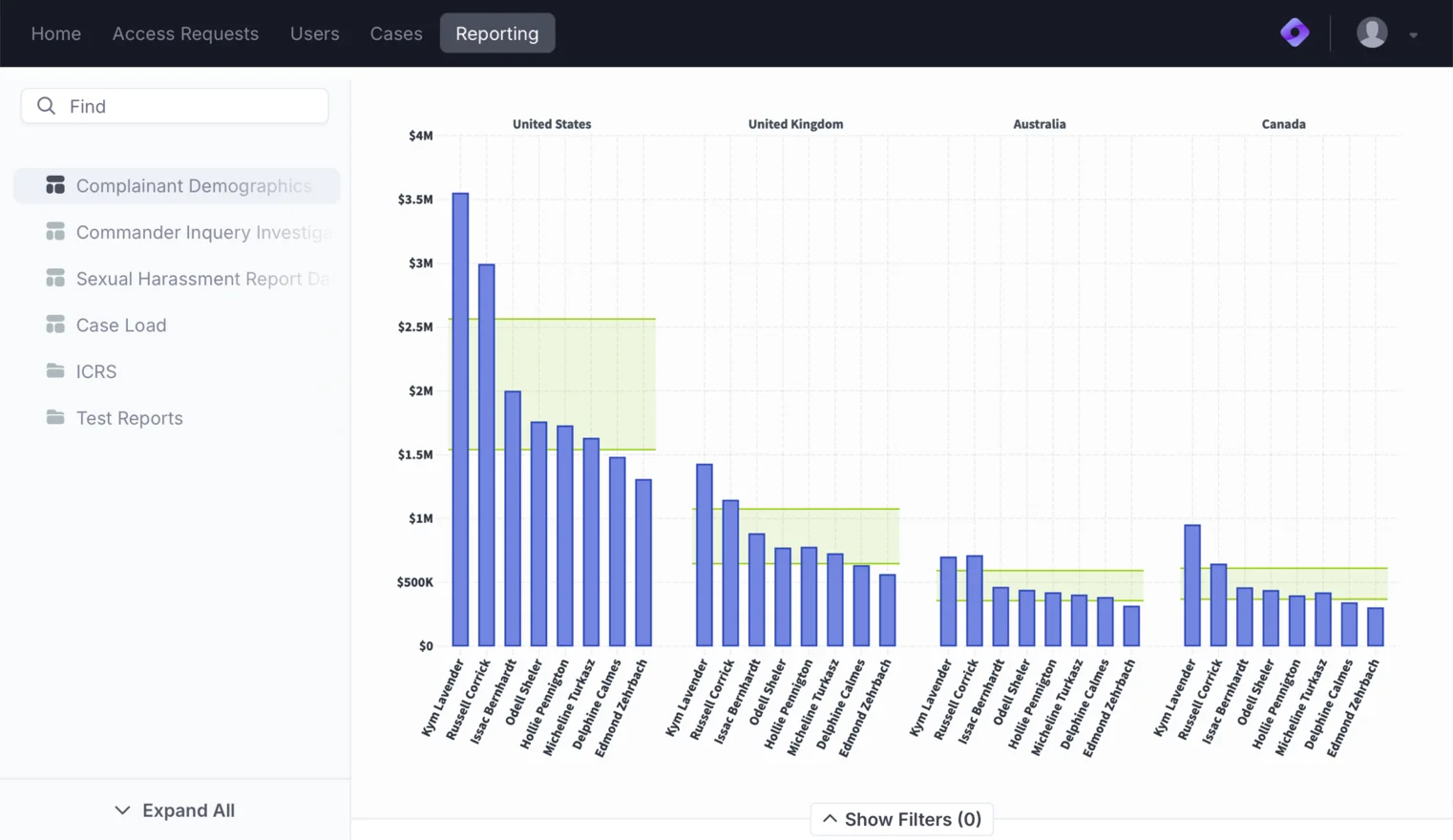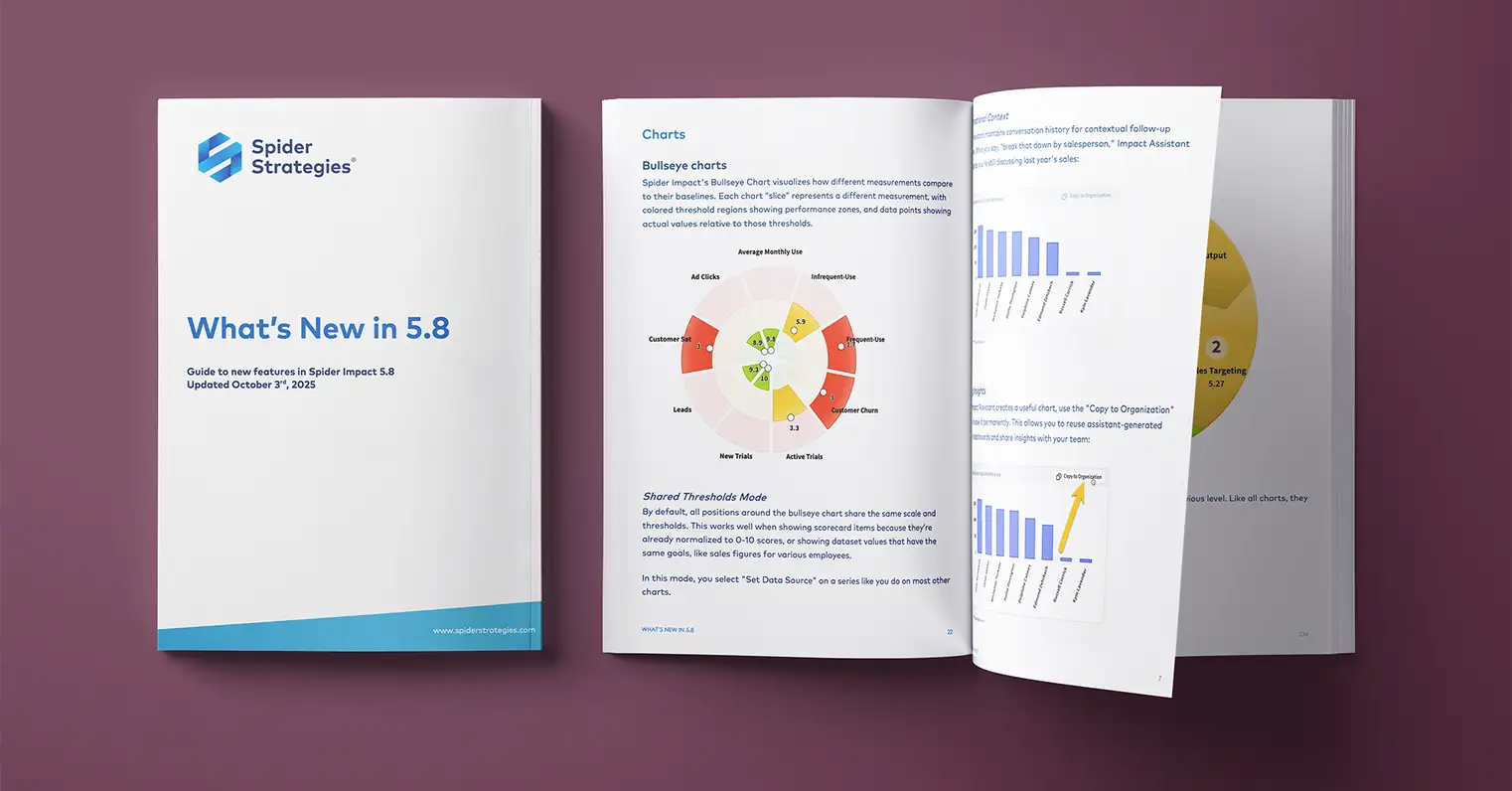How No-Code Apps Turn Spreadsheet Chaos Into Strategic Advantage

"Which customer list is the current one?"
If your team has asked this question more than once this month, you're experiencing the hidden cost of spreadsheet dependency.
Right now, customer lists exist in multiple versions across departments. Project trackers hide in personal drives. Strategic initiatives get documented in dozens of disconnected files. And every day, your teams make decisions using information that might be outdated, incomplete, or simply wrong.
This isn't just frustrating—it's expensive. When Finance updates quarterly projections in one spreadsheet while Operations tracks identical budget categories in another, executives discover they've been analyzing completely different datasets at the exact moment they need to make critical decisions. The confusion undermines confidence in your organizational data when accuracy matters most.
Here's what makes this problem particularly insidious: 40% of organizations rely solely on spreadsheets for forecasting, and 76% of companies use Excel as their primary analytical tool. Yet 69% of those same companies admit they're too reliant on Excel.
No-code apps offer a revolutionary escape from this chaos. Instead of accepting spreadsheet dependency or waiting months for custom development, these platforms let your business users build sophisticated data management systems in days. You can transform fragmented processes into unified systems of record that drive strategic alignment across your entire organization—without writing a single line of code.
Main Takeaways
-
Spreadsheet Chaos Undermines Strategy: Multiple data versions across departments create conflicts and errors that derail strategic decisions and weaken organizational effectiveness.
-
No-Code Apps Create Unified Systems: These applications eliminate data silos by connecting isolated workflows into centralized systems that automate validation and streamline operations.
-
Rapid Deployment Without Development: Custom data management applications launch in days rather than months, transforming fragmented processes into strategic operational clarity without requiring development resources.
-
Strategic ROI Beyond Efficiency: Organizations implementing no-code platforms achieve 206% ROI, 50% fewer data errors, and 10-20x faster development compared to traditional coding methods.
The Real Cost of Spreadsheet Dependency
Let's be honest about what's actually happening in many organizations right now:
- Sales teams maintain customer lists separately from marketing databases.
- Project managers track deliverables independently from finance systems.
- Department heads update performance metrics in their own spreadsheets without anyone else knowing.
This fragmentation forces teams to operate in isolation, making cross-departmental initiatives nearly impossible to coordinate effectively.
Even organizations focused on strategic priorities struggle with this challenge. 61% of ESG-focused companies still use spreadsheets to manage their sustainability data despite recognizing the limitations.
When Data Conflicts Cost You Strategic Clarity
Multiple data versions create confusion when you need clarity most. You've probably experienced this scenario:
Your executive team gathers for quarterly planning. Finance presents revenue projections showing 8% growth. Operations shows their forecast indicating 12% growth based on production capacity. Sales presents pipeline data suggesting 6% is more realistic.
Everyone's working from spreadsheets. Everyone's data looks legitimate. Still, no one knows which numbers to trust.
The meeting stalls.
Decisions get delayed.
Teams scramble to reconcile the differences.
By the time you've figured out which data is accurate, market conditions have changed and you're analyzing outdated information anyway.
This isn't just inconvenient—it's strategically damaging. When executives can't trust their data, decision-making slows to a crawl. When teams work from different versions of reality, coordination becomes impossible. When manual reconciliation consumes hours of skilled employee time, strategic work gets pushed aside.
The Multiplication of Errors
Manual data entry multiplies these problems by introducing human error at every step. A single mistyped percentage or incorrectly categorized expense cascades through interconnected reports and forecasts.
Here's how it typically happens: Someone copies data from the CRM into a spreadsheet for analysis. They transpose two numbers. That spreadsheet feeds another spreadsheet that calculates commission rates. The commission calculations feed into the budget forecast. By the time someone catches the error three weeks later, decisions have already been made based on incorrect projections.
Without proper data governance frameworks, these individual failures accumulate until your entire performance management system loses credibility. Teams start questioning every number. Decision-makers demand multiple verification rounds before committing to strategy. The paralysis spreads.
Automated data management and reporting addresses these challenges by reducing manual burden and eliminating errors through automated workflows and real-time data insights.
How No-Code Apps Actually Work
The term "no-code" might sound like marketing hype, but the results speak for themselves. Organizations that implement these platforms build applications in days instead of months and eliminate the manual errors that plague spreadsheet-dependent workflows.
So how does this actually work?
Visual Development That Business Users Can Master
No-code platforms use drag-and-drop interfaces that empower your business users to build sophisticated applications without technical expertise. The visual development environment transforms complex database operations into simple point-and-click actions.
Think of it like this: instead of writing code to create a form that collects project intake information, you visually design the form by dragging fields onto a canvas. Want to add a dropdown menu for project types? Drag the dropdown component. Need a date picker for project deadlines? Drag the calendar component. Want to ensure the budget field only accepts numbers? Click the validation rule option.

(Image from Spider Impact version 5.8)
Your department heads and process owners create custom solutions that address their specific challenges, making application development as accessible as operating a spreadsheet. This accessibility bridges the gap between what you need and what your IT department can deliver.
Pre-Built Components That Accelerate Everything
Pre-built components accelerate your development timeline by offering ready-to-use forms, dashboards, and reports. You'll select appropriate components and configure them to match your exact requirements rather than adapting generic software that doesn't fit your workflows.
These components include advanced capabilities that eliminate the data quality issues plaguing your current spreadsheet systems:
- Advanced form logic that prevents duplicate entries
- Automatic data validation that enforces business rules
- Guided workflows that lead users through complex processes
- Approval routing that ensures proper oversight
- Automatic notifications that keep stakeholders informed
Project intake systems showcase these capabilities through custom approval workflows and automatic routing based on your project criteria. When someone submits a new project request, the system automatically:
- Checks for duplicate project names
- Validates that required budget information is complete
- Routes the request to the appropriate approver based on department and budget size
- Notifies stakeholders at each approval stage
- Updates project dashboards once approved
- Creates audit trails showing who approved what and when
Customer portals deliver another compelling example, providing branded experiences that maintain enterprise-level security while giving external stakeholders controlled access to relevant information.
Cross-Dataset Workflows: Where Real Power Emerges
Cross-dataset workflows represent the most transformative capability, connecting your previously isolated information sources. This is where no-code apps fundamentally change how your organization operates.
Here's a real-world example: A customer service request comes in through your support portal. In a spreadsheet-dependent organization, someone would manually:
- Log the issue in a support tracking spreadsheet
- Check inventory in a separate spreadsheet
- Notify the relevant project team via email
- Update financial forecasts if parts are needed
- Follow up manually to ensure completion
With cross-dataset workflows, that single customer service request automatically:
- Creates a support ticket with all relevant details
- Checks real-time inventory levels across all locations
- Creates a project task assigned to the appropriate team
- Updates inventory reservations if parts will be used
- Adjusts financial forecasts based on expected costs
- Sends notifications to all relevant stakeholders
- Provides the customer with automatic status updates
Automated data management and reporting reduces your team's burden by automating workflows and providing real-time data insights, ensuring accuracy while enhancing productivity.

You'll implement and refine these systems in days rather than months. This rapid deployment means you can test workflows with real users and make adjustments based on actual operational experience.
Studies show that low-code application development is 10 to 20 times faster than traditional coding methods, while research demonstrates that organizations achieve a 206% ROI when implementing these platforms effectively.
These unified systems maintain seamless functionality across desktop and mobile environments. Your field teams, remote workers, and office-based colleagues access identical functionality regardless of location or device. This accessibility breaks down barriers between different work environments and ensures continuous data flow throughout your organization.
Plus, automated KPI systems free your teams from hours of manual spreadsheet coordination and productivity-draining administrative tasks, redirecting energy to strategic analysis where they focus on interpreting performance trends and making informed business decisions.
The Strategic Advantage: From Operational Fix to Competitive Edge
No-code applications deliver competitive advantages that extend far beyond simple process improvements. They fundamentally reshape how your organization operates and competes in data-driven markets.
Establishing a Single Source of Truth
No-code apps establish a single source of truth that eliminates conflicting information across departments.
Remember that scenario where Sales, Finance, and Operations all presented different growth projections? That becomes impossible with a unified system.
When your teams access the same real-time customer information through a unified system, conflicting data can't exist. Updates made by one department appear instantly for all users, eliminating the confusion that plagues spreadsheet-dependent organizations.
Centralized data management creates the data confidence you need for strategic planning and rapid decision-making. KPMG research shows organizations can progress through three stages of maturity from basic departmental systems with siloed data to unified systems that provide consistent views across departments.
Think about what this means for your quarterly planning meetings. Instead of starting with data reconciliation, you begin with strategic discussion. Instead of questioning which numbers to trust, you debate which opportunities to pursue. Instead of delayed decisions, you commit to action with confidence.
Automated Workflows That Multiply Your Team's Effectiveness
Automated workflows eliminate manual intervention while reducing human error across your operational processes. These systems trigger complex processes based on specific conditions, route approvals through proper channels, and generate comprehensive reports without manual work.
Organizations implementing unified systems see dramatic productivity gains. Finance and accounting employees save 14.5 hours per week through streamlined processes and automated workflows.
Let's put that in perspective: if you have a finance team of 10 people, that's 145 hours per week—essentially gaining back nearly four full-time employees just from eliminating manual spreadsheet work. Those hours get redirected to strategic analysis, process improvement, and initiatives that actually grow the business.
Enterprise-Wide Analytics That Transform Strategy
The unified data architecture no-code apps create supports enterprise-wide analytics that transform strategic planning. Instead of spending weeks collecting and consolidating information from scattered spreadsheets, you can leverage business intelligence tools to generate real-time dashboards that reveal patterns previously invisible in fragmented data.
Integration platforms deliver remarkable error reduction, with organizations experiencing 50% fewer data errors as automated processes eliminate manual handling mistakes.
Business intelligence platforms combine data from various sources across your organization, unlocking insights that single data sets can't reveal. This integrated approach enables sophisticated analysis that drives strategic insights and competitive advantage.
KPI dashboards provide centralized performance tracking with continuous access to the latest data, enhanced decision-making through visual information presentation, and simplified data visualization that transforms complex information into clear graphs and charts.
Here's what this looks like in practice: Your marketing team launches a new campaign. In a spreadsheet world, you'd wait weeks to manually compile results from various sources—web analytics, CRM updates, sales data, customer service feedback. By the time you've consolidated everything, the campaign is over and you're analyzing historical data.
With unified no-code apps connected to BI tools, you see real-time campaign performance across all metrics simultaneously. You spot issues within days instead of weeks. You identify successful tactics and scale them while the campaign is still running. You make data-driven adjustments that improve ROI before you've spent the entire budget.
This is how strategic advantage compounds—not through one big improvement, but through dozens of faster, smarter decisions made possible by unified, accessible data.
Getting Started: From Spreadsheet Chaos to Strategic Clarity
You don't have to accept spreadsheet chaos as inevitable. No-code apps, now available in Spider Impact, provide the perfect escape route for organizations ready to transform their data management without the complexity and cost of traditional software development.
The transformation path is straightforward:
Start with your biggest pain point. Don't try to replace everything at once. Identify the one area where spreadsheet chaos causes the most damage—maybe it's project intake, customer data management, or performance tracking. Build a no-code solution that solves that specific problem.
Let success drive adoption. When one department experiences the benefits of unified data and automated workflows, others will want the same capabilities. The transformation spreads organically as teams see what's possible.
Build on your foundation. As you create more applications, connect them through cross-dataset workflows. Each connection multiplies the value of your existing systems, creating a comprehensive data ecosystem that supports enterprise-wide strategy.
Spider Impact's No-Code Apps Platform
Spider Impact's no-code Apps platform puts sophisticated application development directly in your hands. You can build custom solutions that eliminate data silos and streamline workflows:
- Project tracking systems that automatically route approvals through proper channels
- Customer portals that maintain your brand while securing sensitive information
- Operational dashboards that provide real-time visibility into department performance
- Data collection tools that prevent duplicates and create comprehensive audit trails
All without writing a single line of code.
This transformation goes beyond simple organizational improvements. When your teams operate from unified data sources and automated workflows handle routine processes, strategic execution accelerates dramatically.
Decision-making becomes faster and more accurate.
Cross-departmental collaboration improves.
Your organization gains the agility needed to respond quickly to market changes.
The organizations winning in data-driven markets aren't necessarily the ones with the most sophisticated IT departments—they're the ones that empowered business users to solve their own data problems quickly and effectively.
Schedule a demo today to discover how no-code apps can turn your data chaos into a competitive advantage.
Frequently Asked Questions
What are the main problems with using spreadsheets for organizational data management?
Spreadsheets create multiple data versions across departments, leading to conflicting information and errors that undermine strategic decisions. Manual data entry introduces human error at every step, while disconnected workflows prevent meaningful collaboration between teams. These issues compound daily, with 40% of organizations still relying solely on spreadsheets for forecasting and 76% using Excel as their primary analytical tool despite recognizing their over-reliance on it.
How do no-code apps eliminate data silos and improve collaboration?
No-code apps establish a single source of truth by connecting previously isolated information sources through unified systems. When one department updates customer information, it appears instantly for all users, eliminating the confusion from multiple spreadsheet versions. Cross-dataset workflows automatically trigger updates across inventory systems, project management tools, and financial forecasting applications, creating comprehensive operational intelligence with real-time visibility across the entire organization.
What makes no-code development faster than traditional software development?
No-code platforms use drag-and-drop interfaces and pre-built components that eliminate the need for technical coding expertise. Business users can create sophisticated applications using visual development environments that transform complex database operations into simple point-and-click actions. This approach is 10 to 20 times faster than traditional coding methods, allowing organizations to implement and refine systems in days rather than months while achieving rapid deployment and immediate operational benefits.
What strategic advantages do no-code apps provide over spreadsheet-based systems?
No-code apps create unified data architecture that supports enterprise-wide analytics and transforms strategic planning capabilities. Organizations experience 50% fewer data errors through automated processes, while finance teams save 14.5 hours per week through streamlined workflows. The single source of truth eliminates conflicting departmental information, enables real-time decision-making, and provides the data confidence needed for strategic planning and competitive advantage in data-driven markets.
How quickly can organizations see results from implementing no-code apps?
Organizations can implement no-code applications in days rather than months, with some achieving immediate operational improvements. Research shows companies can achieve a 206% ROI when implementing these platforms effectively, while reducing data errors by 50% and accelerating application development by 1,000% compared to traditional coding approaches. The rapid deployment allows for real-time testing and refinement based on actual operational experience, ensuring continuous improvement and immediate business impact.
Demo then Free Trial
Schedule a personalized tour of Spider Impact, then start your free 30-day trial with your data.






